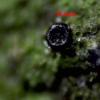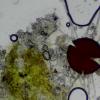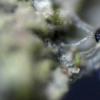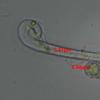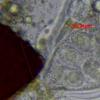
09-01-2026 17:41
Arnold BüschlenHallo, F. dilatata wird von vielen Bryoparasiten

10-01-2026 20:00
Tom SchrierHi all,We found picnidia on Protoparmeliopsis mur

07-01-2026 22:22
 Danny Newman
Danny Newman
Tatraea sp. on indet. hardwood The Swag, Great Sm

10-01-2026 01:18
 Danny Newman
Danny Newman
cf. Neovaginatispora fuckelii on indet. shrub Pre

07-01-2026 10:24
 Danny Newman
Danny Newman
Pezicula sp. on indet. hardwood Appalachian Highl

09-01-2026 10:08
 Blasco Rafael
Blasco Rafael
Hola, en el mismo habitat que la anteriorRetamaDia

08-01-2026 21:22
 Blasco Rafael
Blasco Rafael
Hola, He recogido esta muestra de Orbilia sobre Re

07-01-2026 17:29
 Marc Detollenaere
Marc Detollenaere
Dear Forum,On a barkless Populus I found some smal

10-11-2021 17:33
 Riet van Oosten
Riet van Oosten
Add-on topic http://www.ascofrance.com/forum/7059

07-01-2026 10:05
 Danny Newman
Danny Newman
cf. Chaetospermum on XylariaCosby Campground, Grea
While looking at lichens on a twig under a dissecting microscope, I noticed what looked like 100 um perithecia (some spherical, others apparently deflated into tiny black buttons) apparently growing on an algal crust on a Prunus spinosa twig. I now see they are called chasmo- or cleistothecia.
They look very similar to Erysiphe species (rather similar to E flexuosa on Aesculus? Update: similar, but not as wavy), with c. 100 um appendages about 6 um wide, with hooked tips.
There are several asci per cleistothecium, each with what looks like at least 8 ascospores. The asci are c 55 x 40 um. The spores are 15.5-17.9 x 9.9-11.3 um (5 spores measured).
Warwickshire, UK Thanks for any information.
It does not answer your question per se but I find these fungi from time to time on bryophytes. It seems that mature fruitbodies fall from vascular plants, as they are not connected to other things via mycelium. I guess the blow around like a tumbleweed and disperse spores further away if the ascomata can act as propagules themselves. The hairs may allow them to get hooked onto vectors. Not sure, just a theory based on my own observations and thoughts.
All the best,
George
